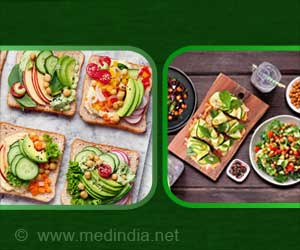A new study has found that labeling foods with traffic-light symbols in hospital cafeteria reduces calories purchased by employees.

‘Workplace foods are unhealthy and high in calories. Interventions that reduce unhealthy eating habits in the workplace would help address the rising prevalence of obesity epidemic around the world.’





Researchers used employee ID numbers to track the purchases of 5,695 employees buying food at MGH cafeterias. After establishing a three-month baseline period, the researchers tracked purchases made after the labels were added and again after product-placement changes made healthier choices more accessible. The interventions remained in place at MGH cafeterias, and the study analyzed data over two years after the traffic-light labels were first introduced. The researchers found that the proportion of green-labeled foods purchased increased while the proportion of the least healthy foods purchased decreased.
The current study, a retrospective analysis using newly available item-level calorie data, associated the labeling with a reduction in calories over the two-year period studied and found that the biggest calorie decreases were seen in red-labeled food purchases. "So that indicates that not only were employees' consuming fewer calories at work," said lead author Anne N. Thorndike, MD, MPH, "but also that they were improving the quality of the calories they were purchasing."
For employees who visited the cafeterias most frequently, the estimated reduction in calories equated to a weight loss of up to 2 kg (4.4 pounds) over time. However, Thorndike stressed, "this is not a weight loss program." Data show that people gain an average of one to two pounds per year. "If a program like this could help guarantee that every adult maintained a steady weight rather than continuing to gain," she said, "we could start to reverse the obesity epidemic."
Prior research evaluating the impact of food labeling interventions on calories purchased has been either lab-based or cross-sectional, assessing a single food or meal choice. "The difference with our study is that it looked at real-world purchases by employees over several months," said Thorndike.
Advertisement
"More workplaces should be doing these kind of interventions," Thorndike said. "Wellness programs typically end after a certain period, but programs like this, that people are exposed to every day when they go to work, become part of the workplace culture. That's how you get people to make long-term changes."
Advertisement
Source-Eurekalert















